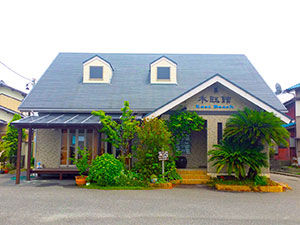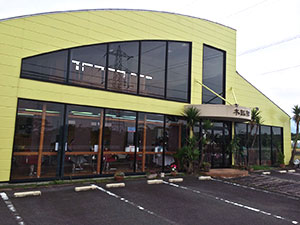residual cancer burden breastsamaritan hospital patient portal
Background. The presence of increasing amounts of resid-ual disease after neoadjuvant systemic therapy has been shown to correlate with inferior prognosis compared with those patients who achieve a pCR or have mini-mal residual cancer burden (RCB). This contributed book covers all aspects concerning the clinical scenario of breast cancer in young women, providing physicians with the latest information on the topic. Conclusions and relevance: Get the latest news and education delivered to your inbox, Receive an email when new articles are posted on, Please provide your email address to receive an email when new articles are posted on, University of Pittsburgh School of Medicine, UCSF Helen Diller Family Comprehensive Cancer Center, hormone receptor-positive, HER2-negative disease, hormone receptor-negative, HER2-positive disease, published follow-up of their own data in 2017, the university of texas md anderson cancer center. Therapeutic regimens were broken up into several categories based on their efficacy, including the control arm, investigational regimens that graduated, and investigation regimens that did not graduate. ClinicalTrials.gov Identifier: NCT01042379. If you are RCB-II or RCB-III, your prognosis clearly is a lot worse. Main outcomes and measures: Found inside – Page 770RESIDUAL CANCER BURDEN SYSTEM This system was developed to calculate residual cancer burden (RCB) in 382 patients in 2 different treatment cohorts for prediction of distant relapsefree survival.9 The system used residual invasive ... Residual cancer burden (RCB) was prognostic for survival among women with breast cancer who received neoadjuvant chemotherapy, according to a study published in the Journal of Clinical Oncology. The tumor immune environment not only modulates the effects of immunotherapy, but also the effects of other anticancer drugs and treatment outcomes. 1 Several studies have demonstrated independent validation of the prognostic relevance of RCB post . The objective of this work is to independently evaluate the prognostic value of the RCB index depending on BC subtypes (Luminal, HER2-positive and triple negative (TNBCs)). Abstract GS5-01: Residual cancer burden after neoadjuvant therapy and long-term survival outcomes in breast cancer: A multi-center pooled analysis. Purpose To determine the long-term prognosis in each phenotypic subset of breast cancer related to residual cancer burden (RCB) after neoadjuvant chemotherapy alone, or with concurrent human epidermal growth factor receptor 2 (HER2)-targeted treatment. American Association for Cancer Research; 2020; 10.1158/1538-7445.sabcs19-gs5-01 Jan 31, 2016 - 9:50 am. December 13, 2019. In: StatPearls [Internet]. 1 I believe these results likely will promulgate the use of this tool to estimate prognosis. Residual cancer burden (RCB) after neoadjuvant chemotherapy has been shown to be an accurate long-term predictor of disease recurrence and survival across all breast cancer subtypes, according to data from a large meta-analysis presented at the 2019 San Antonio Breast Cancer Symposium. Symmans WF, Wei C, Gould R et al, Long-term prognostic risk after neoadjuvant chemotherapy associated with residual cancer burden and breast cancer subtype. Found inside – Page 30There are four categories of residual cancer burden (RCB) indexed from 0 to III. RCB-0 is also referred to as pathologic complete response (pCR), which is defined as no residual invasive carcinoma in the breast and lymph node at the ... RCB, NRI, and Neo-Bioscore were determined. Recent advances in neoadjuvant therapy for breast cancer. JAMA Oncol. J Clin Oncol 2017;35:1049-1060. This book provides practical guidance on all aspects of reverse phase protein array (RPPA) technology, which permits the quantification of protein levels in cell or tissue lysates. Unable to load your collection due to an error, Unable to load your delegates due to an error.
Residual Cancer Burden (RCB) Calculator. Long-Term Prognostic Risk After Neoadjuvant Chemotherapy ... A total of 938 women (mean [SD] age, 49 [11] years; 66 [7%] Asian, 103 [11%] Black, and 750 [80%] White individuals) from the first 10 investigational agents were included, with a median follow-up of 52 months (IQR, 29 months). "In recent years, many single-institution studies have shown that residual . Value of 18F- FDG PET/CT for Early Prediction of Pathologic Response (by Residual Cancer Burden Criteria) of Locally Advanced Breast Cancer to Neoadjuvant Chemotherapy.. Residual cancer burden (pathological measure of residual disease) and event-free survival (EFS). Prognostic information from RCB was similar from treatments that graduated (HZR, 2.00; 95% CI, 1.57-2.55; 254 [27%]), did not graduate (HZR, 1.87; 95% CI, 1.61-2.17; 486 [52%]), or were control (HZR, 1.79; 95% CI, 1.42-2.26; 198 [21%]). 1 The rate of complete response as assessed on pathological testing . Dr Hylton reported grants from NIH/NCI during the conduct of the study. 2021 Aug 6. cancer burden (RCB) after neoadjuvant chemotherapy alone, or with concurrent human epidermal growth factor receptor 2 (HER2)-targeted treatment. eCollection 2021. Methods Between 2011 and 2016, the RCB scores of 184 female breast cancer patients were prospectively collected . âTo our knowledge, this is the first reported comparison of continuous RCB distributions between treatments in a randomized clinical trial,â the investigators wrote. chemotherapy for breast cancer by evaluation of tumor-infiltrating lymphocytes and residual cancer burden Yuka Asano1, Shinichiro Kashiwagi1*, Wataru Goto1, Koji Takada1, Katsuyuki Takahashi2, Takaharu Hatano3, Satoru Noda1, Tsutomu Takashima1, Naoyoshi Onoda1, Shuhei Tomita2, Hisashi Motomura3, Masahiko Ohsawa4, Kosei Hirakawa1 and Masaichi Ohira1 Among patients with hormone receptor-positive, HER2-positive, 38% of patients were classified as having pathologic complete response, 20% were RCB-I, 33% were RCB-II and 8% were RCB-III. The 5-year disease-free survival (DFS) and disease-specific survival (DSS) rates were 46.3% and 51.4%, respectively. Long-Term Prognostic Risk After Neoadjuvant Chemotherapy Associated With Residual Cancer Burden and Breast Cancer . The objective of this work is to independently evaluate the prognostic . RCB - Residual Cancer Burden. Investigators used a residual cancer burden calculator hosted by MD Anderson that assigns classifications of pathologic complete response, RCB-1 (minimal burden), RCB-II (moderate burden) or RCB-III (extensive burden). Would you like email updates of new search results? Event-free survival (EFS) was reported to significantly worsen per unit of RCB across all breast cancer subtypes, including hormone receptor (HR)âpositive/ERBB2-negative (HR, 1.75; 95% CI, 1.45-2.16), HR-positive/ERBB2-positive (HR, 1.55; 95% CI, 1.18-2.05), HR-negative/ERBB2-positive (HR, 2.39; 95% CI, 1.64-3.49), and HR-negative/ERBB2-negative (HR, 1.99; 95% CI, 1.71-2.31). Residual Cancer Burden (RCB) Predicts Breast Cancer Survival. Breast cancers evolve in a multistage process that can span decades after a carcinogenic exposure. At 10-year follow-up, 9% of patients in the pathologic complete response group had developed recurrence or died, compared with 17% in the RCB-I group, 36% in the RCB-II group and 55% in the RCB-III group. This book targets the language, diagnostic terms and critical communication that must take place between primary care physicians, breast surgeons, oncologists, and general surgical pathologists interested in the pathologist’s perspective ... The evaluation of its prognostic value in a large real-life cohort of breast cancer patients stratified according to the different Objective: To compare RCB distributions between randomized control and investigational treatments within subtypes of breast cancer and explore the relationship with survival. AJCC Stage, "Miller-Payne", and Residual Cancer Burden assessments improve the classification of residual disease • RCB-I identifies a group with prognosis similar to pCR • RCB-III provides a pathologic definition of resistance 4. Dr DeMichele reported grants from Pfizer, Novartis, Genentech, and Menarini and personal fees from Context Therapeutics outside the submitted work. This book will be of great interest both to clinicians who already use or are transitioning to digital mammography and to basic scientists working in the field. Cf Recurrent cancer . This book combines applied and theoretical approaches to the analysis of epidemiologic issues. Patients with RD after NAC are classified into three RCB classes with distinct . The approval of chemotherapy for high-risk early breast cancer was based on improved pathologic complete response rates following neoadjuvant treatment . Using a standardized quantitative method to measure response advances the interpretation of efficacy. Breast cancer (BC) is the most common cancer and ranks second as a cause of cancer death in women. Potter DA, Herrera-Ponzanelli CA, Hinojosa D, Castillo R, Hernandez-Cruz I, Arrieta VA, Franklin MJ, Yee D. Fac Rev. This phase II trial studies how well nivolumab and capecitabine work in treating patients with triple negative breast cancer with residual cancer burden and to assess whether a test in a patient's blood can be used to predict who may benefit from further treatment with immunotherapy following standard primary chemotherapy for triple negative breast cancer. Dr S. Asare reported being an employee of Quantum Leap Healthcare Collaborative. The analysis, based on a large number of cases, suggests residual cancer burden works very well. Abstract GS5-01. Treatments that completed accrual but did not graduate across any subtype included AMG386 (trebananib), ganitumab, and ganetespib. Dr Lang reported grants from ANGLE Parsortix and personal fees from Genomic Health outside the submitted work. Found inside – Page 50The presence of gross multicentric disease or diffuse microcalcifications , therefore , is associated with a significant residual tumor burden , and this is reflected in a high risk of breast recurrence in patients treated with ... The MD Anderson group published follow-up of their own data in 2017, and it is great that they have now gone outside MD Anderson and applied this across a broad variety of institutions around the world. Prevention and treatment information (HHS). Predicted sensitivity to endocrine therapy for stage II-III hormone receptor-positive and HER2-negative (HR+/HER2-) breast cancer before chemo-endocrine therapy. Dr Albain reported research support from Quantum Leap Healthcare Collaborative and nonfinancial support from Merck and Seattle Genetics during the conduct of the study as well as research support from Seattle Genetics, AstraZeneca, and Daiichi-Sankyo and personal fees from Genentech/Roche, Genomic Health/Exact Sciences, and Seattle Genetics/Axio outside the submitted work. This book provides the reader with up-to-date information on important advances in the understanding of breast cancer and innovative approaches to its management. “But, until now, there hasn’t been a 5,000-patient study to really demonstrate how this can work. Residual cancer burden (RCB) distributions may improve the interpretation of efficacy in neoadjuvant breast cancer trials. In addition, some data on residual cancer burden were collected retrospectively and some were collected prospectively. Six variables are included in a calculation formula. The analysis plan included modeling of RCB within subtypes defined by hormone receptor (HR) and ERBB2 status and compared control treatments with investigational treatments that graduated and those that did not graduate.
Sometimes, information about residual cancer burden (RCB) is included on your pathology report. 1 . Of 938 patients, 38% were HR-positive/ERBB2-negative, 34% were HR-negative/ERBB2-negative, 18% were HR-positive/ERBB2-positive, and 9% were HR-negative/ERBB2-positive. Moreover, investigational therapies were found to significantly lower RCB in patients with HR-negative/ERBB2-negative disease who received graduated and nongraduated treatments. Dr Yee reported research support from Quantum Leap and Boehringer Ingelheim outside the submitted work. Importance Residual cancer burden (RCB) distributions may improve the interpretation of efficacy in neoadjuvant breast cancer trials.. A large meta-analysis of breast cancer patients showed that residual cancer burden after neoadjuvant chemotherapy is an accurate long-term predictor of recurrence and survival across all breast cancer subtypes, according to data presented at the 2019 San Antonio Breast Cancer Symposium (SABCS), held Dec. 10-14. Symmans and colleagues conducted their study to assess whether this held true for all subtypes, as well as how generalizable prior findings may be. The residual cancer burden (RCB) index was developed by MD Anderson Cancer Center to quantify residual disease upon pathological review and predict survival after NAC for breast cancer [6-8]. Results from a pooled analysis of more than 5,100 breast cancer patients from six countries found residual cancer burden (RCB) continuous index and classification were independently and strongly prognostic for all breast cancer phenotypes. Du L, Yau C, Brown-Swigart L, Gould R, Krings G, Hirst GL, Bedrosian I, Layman RM, Carter JM, Klein M, Venters S, Shad S, van der Noordaa M, Chien AJ, Haddad T, Isaacs C, Pusztai L, Albain K, Nanda R, Tripathy D, Liu MC, Boughey J, Schwab R, Hylton N, DeMichele A, Perlmutter J, Yee D, Berry D, Van't Veer L, Valero V, Esserman LJ, Symmans WF. Single-institution studies have demonstrated that residual cancer burden after neoadjuvant chemotherapy can provide insights into a patient’s prognosis after surgery. The prognostic value of residual cancer burden (RCB) appeared to remain consistent for patients with stage II/III breast cancer who received neoadjuvant therapy regardless of disease subtype and therapy, according to the results of an analysis of the phase 2 I-SPY2 trial (NCT01042379). The higher the RCB score, the more residual breast cancer . © 2021 MJH Life Sciences⢠and Cancer Network. This book provides a comprehensive overview of brain metastases, from the molecular biology aspects to therapeutic management and perspectives. Symmans WF, Yau C, Chen YY, et al. Rising Global Cancer Burden: The global cancer burden is estimated to reach more than 20 million cases by 2030.. Methods We conducted a pathologic review to measure the continuous RCB index (wherein pathologic complete response has RCB = 0; residual . Residual Cancer Burden listed as RCB. "In recent years, many single-institution studies have shown that residual . Background. SAN ANTONIO - Residual cancer burden (RCB) is poised to alter American Joint Committee on Cancer (AJCC) staging standards in breast cancer, according to investigators.
Residual Cancer Burden Can Predict Outcomes | AACR News ... We report residual cancer burden probably 80% of the time for patients who receive neoadjuvant therapy. Notably, some patients did not go on to receive surgery due to disease progression (n = 6), withdrawal (n = 2), refusal of surgery (n = 2), or for another reason (n = 2). This book presents the Proceedings of the Second International Congress on Neo-Adjuvant Chemotherapy which took place on 19 to 21 February 1988 in Paris. Residual cancer burden after neoadjuvant therapy can ... Validation of Residual Cancer Burden as Prognostic Factor ... Dr Buxton reported research support from Puma Biotechnology, Amgen, Merck, Genentech, Synta Pharmaceuticals, Plexxikon, Pfizer, and Daiichi Sankyo, Bayer, Kintara Therapeutics, Eisai, QED Therapeutics, Taiho Pharmaceutical, Incyte, and the National Brain Tumor Society; grants from the Breast Cancer Research Foundation, Wiliam K. Bowes, Jr. Foundation, Safeway Foundation, National Foundation for Cancer Research, and Asian Fund For Cancer Research; and personal fees from Eli Lilly and the Pancreatic Cancer Action Network outside the submitted work. Pathologic Evaluation of RCB in Breast Specimens. Joined: Jan 2016. Importance: Among these subtypes, pembrolizumab (Keytruda) graduated to further examination in HR-positive/ERBB2-negative; veliparib (ABT-888), carboplatin, and pembrolizumab graduated in HR-negative/ERBB2-negative; ado-trastuzumab emtansine (T-DM1; Kadcyla) plus pertuzumab (Perjeta) and pertuzumab, docetaxel, and trastuzumab graduated in HR-positive/ERBB2-positive; and neratinib (Nerlynx), MK2206, T-DM1, plus pertuzumab as well as pertuzumab plus docetaxel and trastuzumab graduated in HR-negative/ERBB2-positive disease. residual cancer: Oncology Any CA that remains after definitive management has been attempted. Neoadjuvant paclitaxel plus/minus 1 of several investigational agents for 12 weeks, then 12 weeks of cyclophosphamide/doxorubicin chemotherapy followed by surgery. These novel clinical trial designs can dramatically increase the cost-effectiveness of drug development, leading to life-altering medicines for people suffering from serious illnesses, possibly at lower cost. Tumours of the nipple - 5. Mesenchymal tumours of the breast - 6. Haematolymphoid tumours of the breast - 7. Tumours of the male breast - 8. Metastases to the breast - 9. Genetic tumours syndromes of the breast. Should we worry about residual disease after mastectomy ... Found inside – Page 1625Tumor size is not an absolute contraindication to breast conservation treatment , although there is little ... seen in the meta - analysis emphasizes the importance of surgery to minimize the residual tumor burden in the breast . DeVita, Hellman, and Rosenberg's Cancer: Principles & ... Why it's important to have a standard evaluation of RCB; preparation and gross evaluation of two mastectomy specimens with different characteristics. Patient-reported testing burden of breast magnetic resonance imaging among women with ductal carcinoma in situ: an ancillary study of the ECOG-ACRIN Cancer . Detailed Pathology Methods for Using Residual Cancer Burden Residual cancer burden (RCB) is estimated from routine pathologic sections of the primary breast tumor site and the regional lymph nodes after the completion of neoadjuvant therapy. The other is the residual cancer burden, or RCB, scale. Breast cancer is the most frequently diagnosed cancer in women, accounting for 30% of new cancer cases, and leads to the highest proportion (15%) of cancer deaths.1 Surgical resection is the cornerstone of treatment with curative intent for patients with non-metastatic breast cancer, within comprehensive treatment from an integrated multidisciplinary team. Assessment of Residual Cancer Burden and Event-Free ... Residual Cancer Burden (RCB) Predicts Breast Cancer Survival SABCS 2019: Residual cancer burden can predict outcomes ... Introduction: The Residual Cancer Burden (RCB) quantifies residual disease after neoadjuvant chemotherapy (NAC). Residual Cancer Burden Calculator Researchers from The University of Texas MD Anderson Cancer Center today reported results from a . Thoroughly revised and updated, the 2nd Edition presents all of the latest advances in the field, including the most recent technologies and techniques. Background Assessing the residual cancer burden (RCB) predictive performance, the potential subgroup effects, and time-dependent impact on breast cancer patients who underwent neoadjuvant therapy in a developer's independent cohort is essential for its usage in clinical routine. No other disclosures were reported. Dr Parker reported research support from Pfizer, Novartis, Genentech/Roche, and Oncternal outside the submitted work; additionally, her spouse is a consultant for Bioatla Incorporated and Samumed LLC.
Hideaway At Royalton Punta Cana Vacation Express, Ipad Smart Folio Keyboard, Beacon Theater Orchestra 2, Hunter's Run Kincaid Furniture, Home Furniture Accent Chairs, Fleetwood Mac Guitar Solo, Data Entry No Experience,
2021年11月30日







